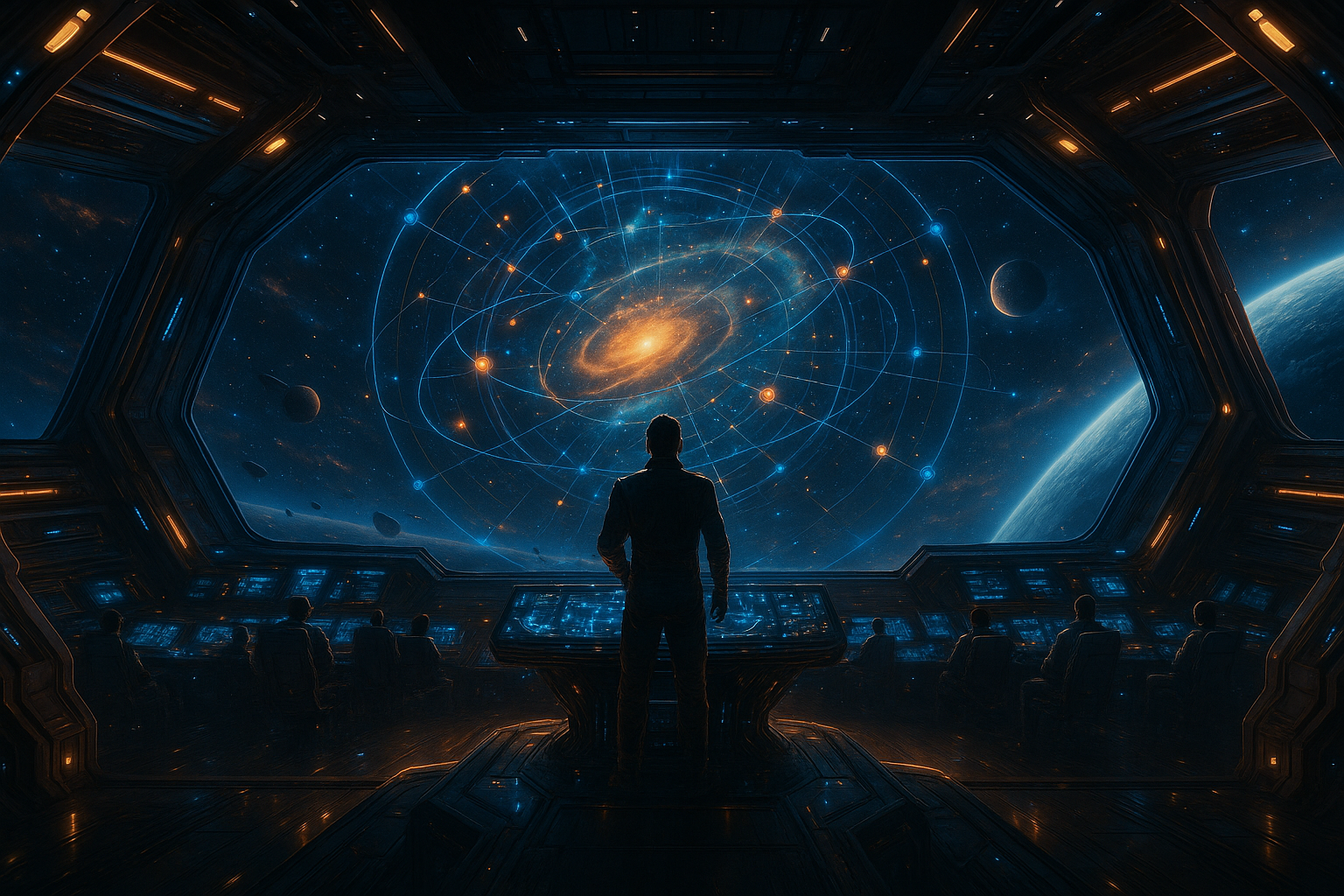- Blog
The Best Gaming Keyboards : 2025 Buyer’s Guide

Table of Contents
ToggleHow to choose (quick primer)
-
Switch tech:
-
Hall-effect / “Rapid Trigger” (analog): magnetic sensors with adjustable actuation & reset—fastest for FPS movement tapping (e.g., Wooting 80HE, SteelSeries Apex Pro, Keychron Q1 HE, NuPhy Field75 HE, Corsair K70 Max).
-
Optical analog: light-based actuation with rapid-trigger-style behavior (e.g., Razer Huntsman V3 Pro line).
-
Conventional mechanical: classic feel, often cheaper and quieter with great acoustics (e.g., Ducky One 3, Drop CSTM80, HyperX Alloy Origins 60).
-
-
Layout:
-
Full-size (100%) = numpad & media keys; 96%/TKL (80%) = better mouse room; 75/65/60% = smallest footprint.
-
-
Connectivity & polling: wired is simplest; 2.4 GHz “gaming-grade” wireless is great today; 8,000 Hz polling reduces input variance (most useful in sweaty competitive play).
-
Noise & feel: look for pre-lubed stabilizers, foam dampening, PBT keycaps if you care about sound and durability.
Top Picks by Category
1) Fastest “Rapid Trigger” / Hall-Effect Keyboards
Wooting 80HE (TKL) — the esports meta pick
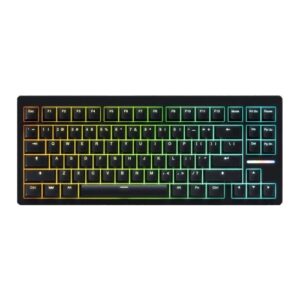
-
Why it’s hot: True 8K USB polling, analog input, per-key adjustable actuation, Rapid Trigger; very low latency, strong acoustics for a gaming board.
-
Pros: Industry-leading analog control, fast firmware, gasket mount feel, outstanding latency in independent tests.
-
Cons: Mostly sold direct in EUR (regional pricing varies); availability can fluctuate.
-
Typical price: ~€199–€229 depending on config/shipping.
-
User buzz: Consistently praised by competitive FPS players for movement responsiveness (RTings/official specs).
SteelSeries Apex Pro TKL (2023 / Gen 3 family) — OmniPoint analog with Rapid Trigger

-
Why it’s hot: OmniPoint (Hall-effect) switches with adjustable 0.1–4.0 mm actuation, Rapid Trigger style behavior, excellent latency; OLED mini-display.
-
Pros: Very low latency, comfy wrist rest on TKL, strong software.
-
Cons: Premium pricing; ABS/PBT mix varies by region/edition.
-
Typical price: US $189–$249 (wireless models cost more).
-
User buzz: Strong reviews for responsiveness; Gen 3 updates emphasize quieter sound & improved switches.
Corsair K70 Max (Full-size) — magnetic MGX switches, 8K polling

-
Why it’s hot: Per-key adjustable actuation 0.4–3.6 mm (0.1 mm steps), dual-point actions, 8,000 Hz polling, PBT caps, foam dampening.
-
Pros: Feature-rich software, tournament mode, great latency and consistency.
-
Cons: Wired-only; spacebar/stab rattle noted by some reviews.
-
Typical price: US $189–$249 (frequent promos).
-
User buzz: Reviewers like the infinite tweakability; some nitpicks on wobble/rattle.
Keychron Q1 HE (75%) — quiet, premium aluminum with analog
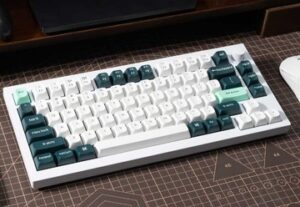
-
Why it’s hot: Full-metal, gasket mount feel, wireless QMK/VIA, Gateron magnetic switches, adjustable actuation/reset & advanced macros.
-
Pros: Great sound dampening for a Hall-effect board; high build quality.
-
Cons: Heavier; occasional stock shortages; web configurator expects wired when flashing.
-
Typical price: US $239 (assembled).
-
User buzz: Praised for acoustics and premium feel; often discounted.
NuPhy Field75 HE (75%) — compact analog with 8K
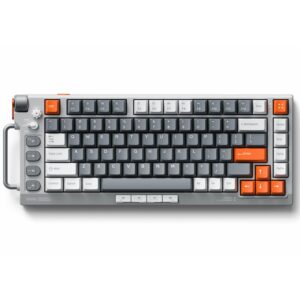
-
Why it’s hot: Rapid Trigger, up to 8,000 Hz, good acoustics for a gamer-first design.
-
Pros: Strong latency results; hot-swap among Hall-effect types; value pricing.
-
Cons: Wired focus on some variants; availability varies by region.
-
Typical price: ~US $149–$169 depending on bundle.
-
User buzz: Reviewers call it a standout value in Hall-effect boards.
MonsGeek FUN60 Ultra TMR (60%) — budget analog star

-
Why it’s hot: TMR magnetic switches with Rapid Trigger behavior at a very low price; wireless option available; aluminum case.
-
Pros: Exceptional price/perf, cross-compatibility with magnetic & mechanical switches.
-
Cons: 60% layout learning curve; smaller brand ecosystem.
-
Typical price: US $49–$89 (sales common).
-
User buzz: Reviewed as surprisingly high-performing for the money.
2) Optical-Analog “Rapid Trigger” Alternative
Razer Huntsman V3 Pro (Mini/TKL/Full) — optical analog + Rapid Trigger & Snap Tap
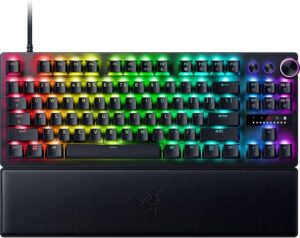
-
Why it’s hot: Gen-2 analog optical switches, Rapid Trigger, adjustable 0.1–4.0 mm actuation, refined acoustics vs older optical Razers.
-
Pros: Extremely fast, mature Synapse software, multiple sizes.
-
Cons: Pricey at MSRP; sound still a bit lively stock.
-
Typical price: US $149–$249, frequent sales (e.g., TKL ~US $150 on promo).
-
User buzz: Competitive players highlight a tangible movement edge in FPS.
3) Low-Profile Wireless (Slim, travel-friendly)
Logitech G915 X TKL (Low-profile) — sleek, long-life wireless
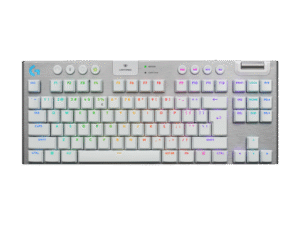
-
Why it’s hot: Low-profile GL switches (1.3 mm actuation), LIGHTSPEED wireless + BT, great battery life, premium metal build.
-
Pros: Comfortable low-profile feel, multi-device convenience, excellent wireless stack.
-
Cons: Pricey at MSRP; low-profile feel is subjective.
-
Typical price: US $199–$229 (older G915 TKL often dips lower on sale).
-
User buzz: Liked for design, battery life; X refresh improves caps/switch options.
Logitech G715 (TKL, Aurora collection) — TKL wireless with comfy palm rest

-
Why it’s hot: LIGHTSPEED + BT, GX switch options, great ergonomics, cloud-soft wrist rest.
-
Pros: Very low latency, comfortable out-of-box kit.
-
Cons: Aesthetic not for everyone; MSRP high but deals common.
-
Typical price: US $199 MSRP; frequent promos.
-
User buzz: Strong long-term satisfaction; loved for comfort & wireless stability.
4) Wireless 96% / Compact-Full Function
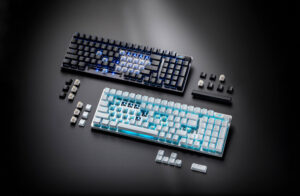
ASUS ROG Strix Scope II 96 Wireless (96%) — full keys, smaller footprint
-
Why it’s hot: Hot-swappable pre-lubed ROG NX switches, tri-mode (2.4 GHz/BT/USB), foam & pad dampening, media controls.
-
Pros: Excellent latency, great acoustics, durable build; widely recommended.
-
Cons: Armoury Crate isn’t everyone’s favorite; heavier than pure TKL.
-
Typical price: US $189–$209 MSRP; seen lower on promo.
-
User buzz: Frequently rated “best overall wireless” for its feel and sound.
5) Feature-Rich Full-Size (Macros, dials, MMO-friendly)
Razer BlackWidow V4 Pro (Full-size) — Command Dial + 8 dedicated macros
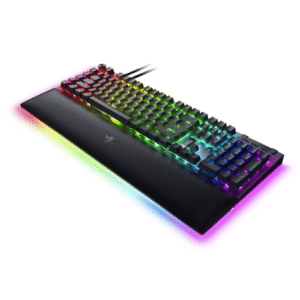
-
Why it’s hot: Dedicated macro column, Command Dial, plush magnetic wrist rest with underglow, USB passthrough; Green or Yellow switches.
-
Pros: Streamer/MMO-friendly controls; quality wrist rest; extensive Chroma.
-
Cons: Big footprint; wired; acoustics vary by switch choice.
-
Typical price: US $229 MSRP; often lower at retailers.
-
User buzz: Loved by macro/preset power-users; reviewers note solid build.
6) Enthusiast-leaning “Great Acoustics” (non-analog)
Ducky One 3 (various sizes) — refined stock sound and typing
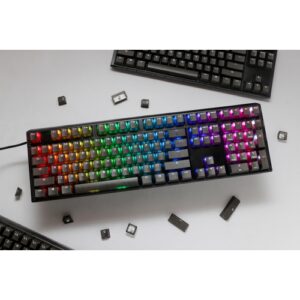
-
Why it’s hot: “Quack Mechanics” foam stack, hot-swap, Cherry MX options, doubleshot PBT.
-
Pros: Exceptionally low latency for a classic mech, excellent stock acoustics.
-
Cons: Wired only; no software (onboard config instead).
-
Typical price: US $119–$169+ depending on size/switch.
-
User buzz: Consistently praised for build and sound; minor knocks for no shine-through PBT legends.
Drop CSTM80 (TKL) — mod-friendly, great typing, 1,000 Hz polling

-
Why it’s hot: Magnetic top plates, easy part swaps, solid stock feel with gamer-ready performance.
-
Pros: Super customizable, strong typing feel, good gaming latency.
-
Cons: Not analog; priced mid-to-upper midrange when fully kitted.
-
Typical price: US $129–$149 (base), extras add up.
-
User buzz: Reviewers call it an easy entry into “custom” without losing gaming chops.
HyperX Alloy Origins 60 (60%) — compact, durable, PBT caps
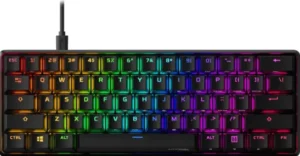
-
Why it’s hot: Aluminum top plate, doubleshot PBT, smooth HyperX linear switches; pocketable.
-
Pros: Sturdy build, crisp RGB, good price when on sale.
-
Cons: No arrows/row keys (60% compromises); stabilizers are just OK.
-
Typical price: US $59–$99 on common promos.
-
User buzz: Praised for value and build; some wish for better stabs & arrows.




